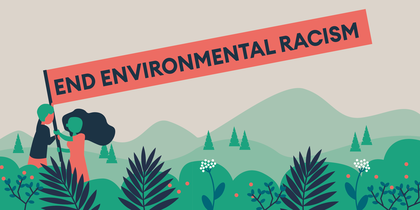|
By Alex Kirchner Development Administrator Poverty comes at a cost. Some of these costs may be familiar, like housing that’s unaffordable when earning minimum wage, or healthcare emergencies that can quickly overwhelm uninsured families. For families living below the poverty line, these costs make up a disproportionate amount of their income and can also lead to poor public health and weaken the overall economy. Nowhere is this more true than when considering one expense that is easy to overlook, but that no family can live without: electricity. Electricity - whether it be from coal, natural gas, nuclear plants, or wind - powers our lives, and is necessary for everything from cooking, to air conditioning, to using the internet. Worryingly, a 2015 survey by the U.S. Energy Information Administration found that over 30% of households struggle to pay their energy bills each month. This has likely only worsened due to COVID-19 job losses as bills continue to pile up until relief measures are inevitably lifted, potentially causing shut-offs or even contributing to housing loss when families are forced to balance rising food, energy, and rent bills.
Some studies suggest that electric bills for families, usually Black and Latinx, who live in historically disinvested and redlined areas are also disproportionately high compared to wealthier neighborhoods. Lack of green space and large expanses of concrete means that some poor neighborhoods are as much as 20 degrees hotter on a summers’ day, leading to extremely high costs to cool homes and dangerous health hazards if air conditioning is unavailable. Additionally, crumbling infrastructure in these areas leaves them vulnerable to outages, particularly during extreme weather events, which are becoming increasingly common due to climate change. When a devastating winter storm hit Texas in February 2021, the power grid was unable to manage the bitter cold and surge in energy demand and caused widespread outages. In total, 111 people died in the storm, many from exposure. Toxic emissions from power plants using fossil fuels don’t just contribute to global warming, they also are drivers of environmental racism that have a direct and devastating impact on families who live near them. Again, this burden is carried by people of color living below the poverty line, since historically redlined areas are more likely to be located near industrial polluters. While coal-fired power plants Crawford and Fisk were shut down in 2012, rates of asthma and other respiratory conditions are still far higher than average on the Southwest side. The botched demolition of the Crawford Coal Plant sent toxic dust throughout the area in 2020, further exacerbating the health and environmental impact on local residents. The many issues caused by high energy bills, poor infrastructure, and fossil fuel pollution require a multifaceted response, particularly as we seek to uplift the students and families we serve at Chicago HOPES for Kids. One small way that you can make a big impact on the future financial and physical health of our families and our city is by enrolling in a community solar farm through our partner Solstice. Solstice provides clean energy to renters, businesses, and homeowners with an easy sign-up, no changes to the electricity available in your home, and as much as a 20% decrease in your monthly bill. Best of all, when you sign up your household, Solstice will make a $200 donation to Chicago HOPES for Kids to fund our Summer Enrichment Program for students experiencing homelessness. Invest in a greener, more affordable future and help our students discover exciting enrichment in science, technology, and the arts by signing up here: https://enroll.solstice.us/chfk/utm_source=website&utm_medium=partnership&utm_campaign=chfk&utm_term=2021.
0 Comments
Leave a Reply. |
BLogArchives
July 2024
Categories |
©2022 Chicago HOPES for Kids. All Rights Reserved.
Website by Gumbo Media
Website by Gumbo Media


 RSS Feed
RSS Feed
